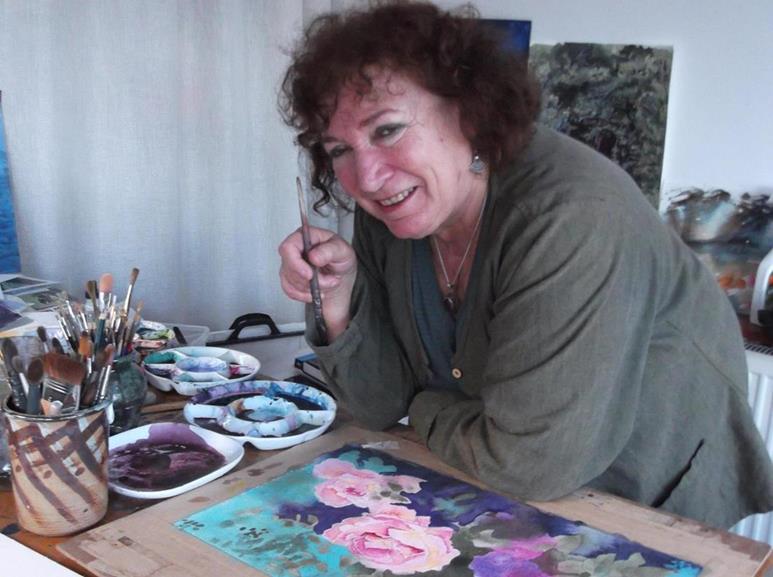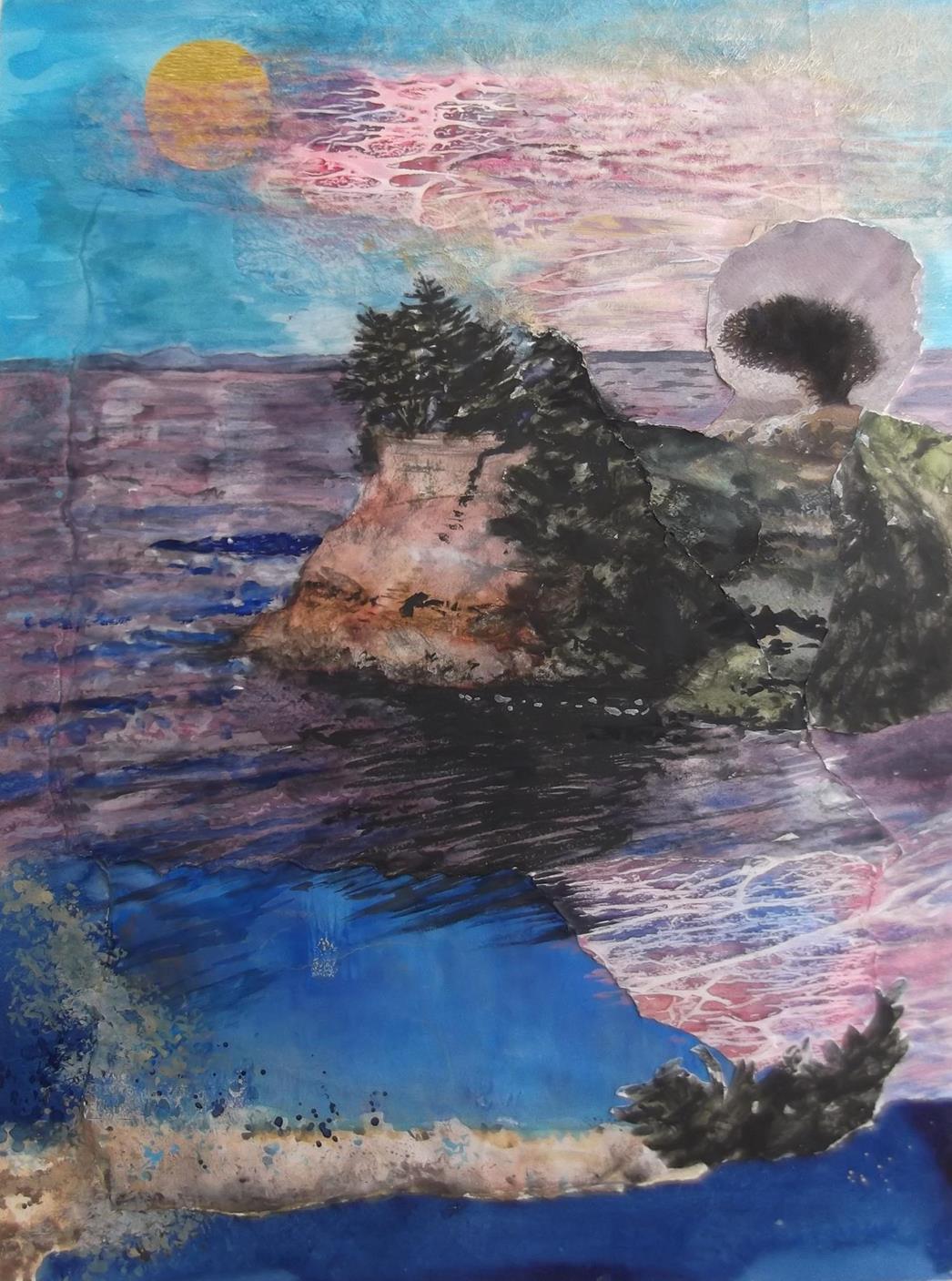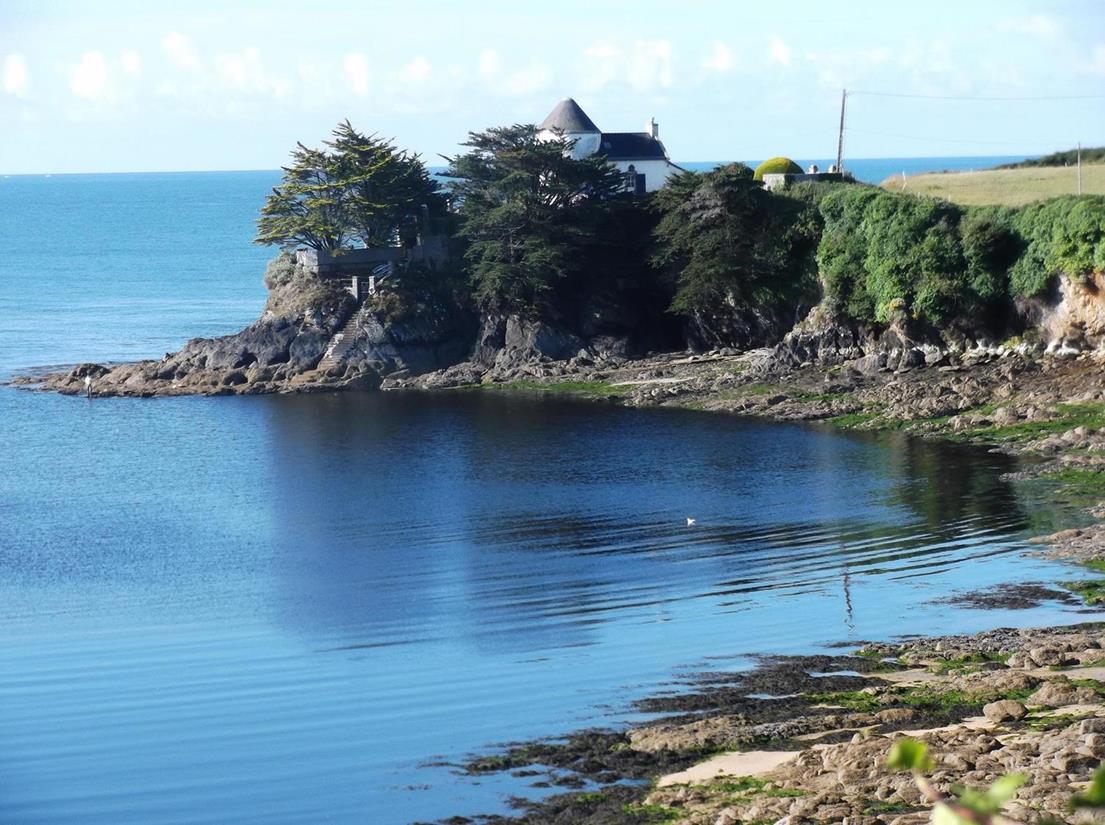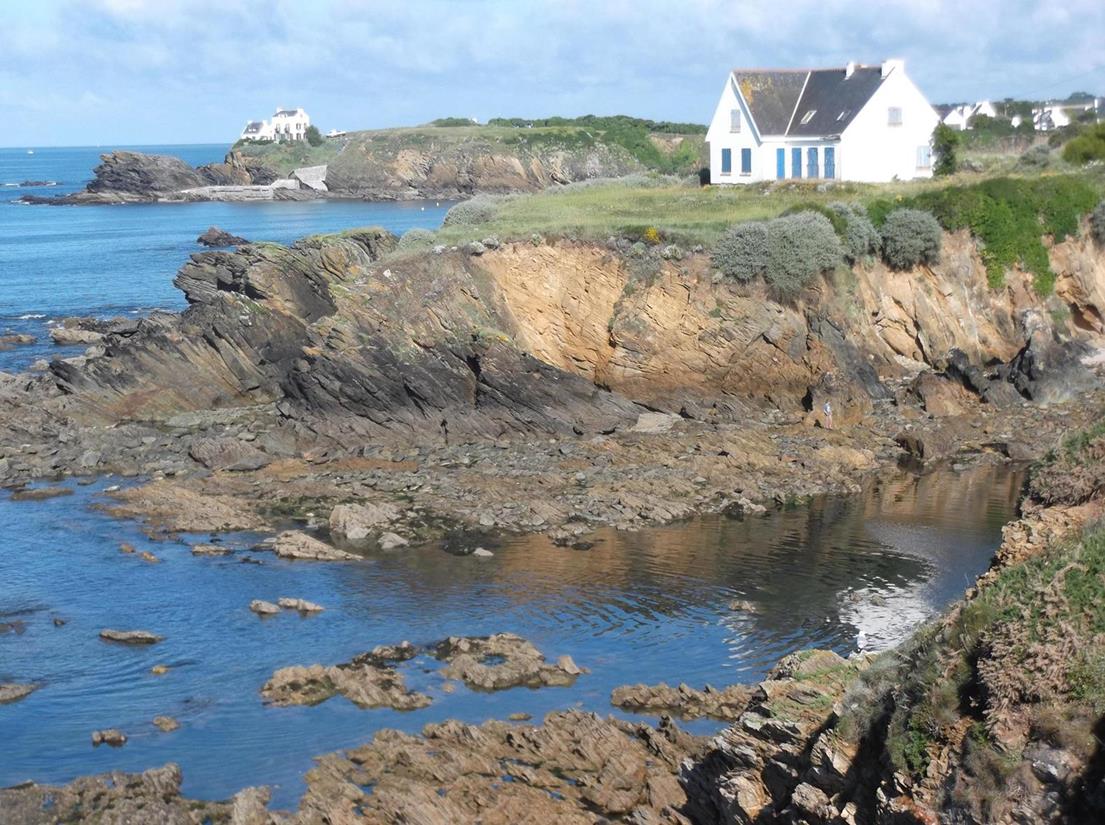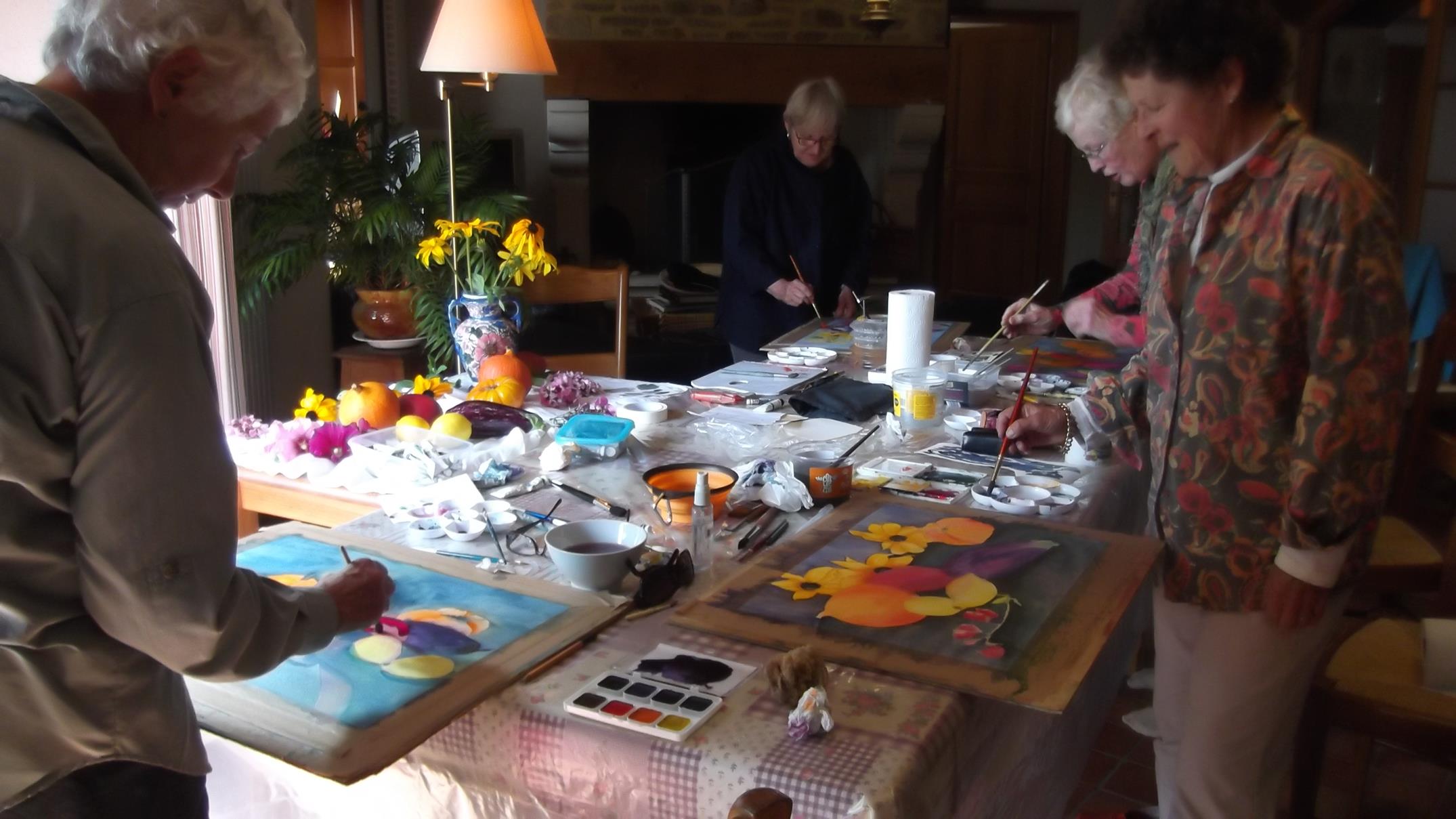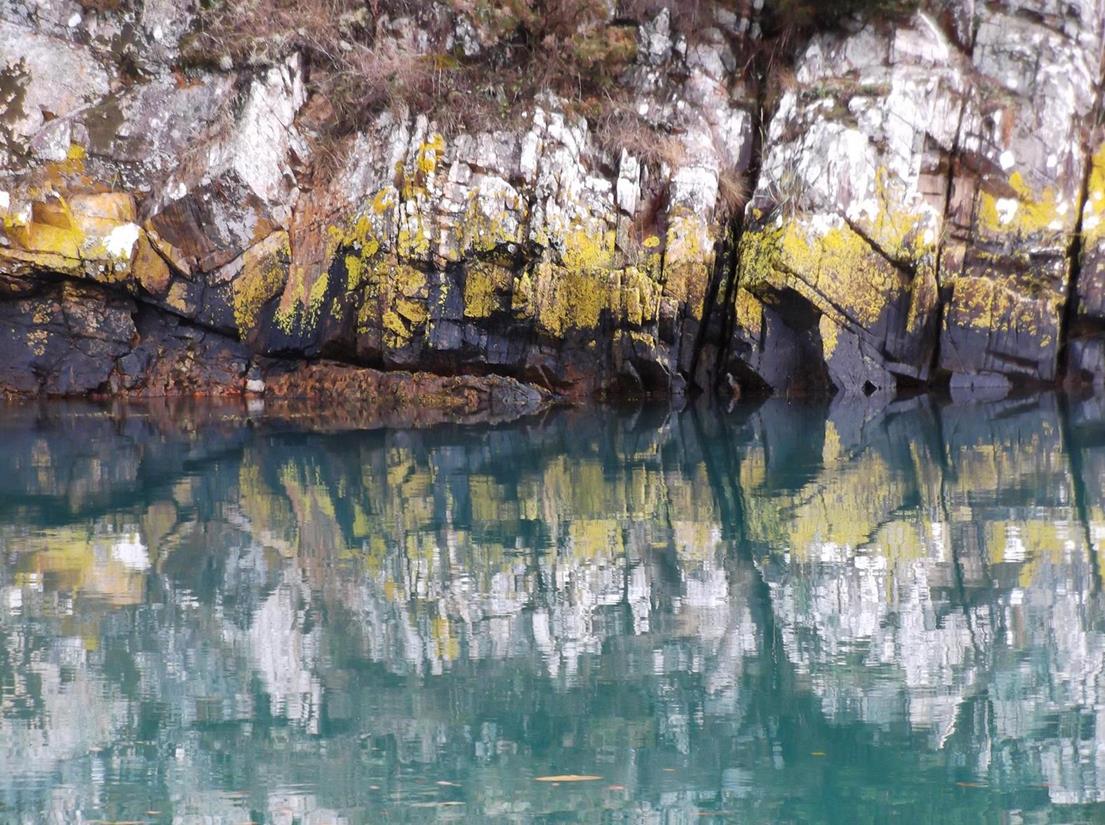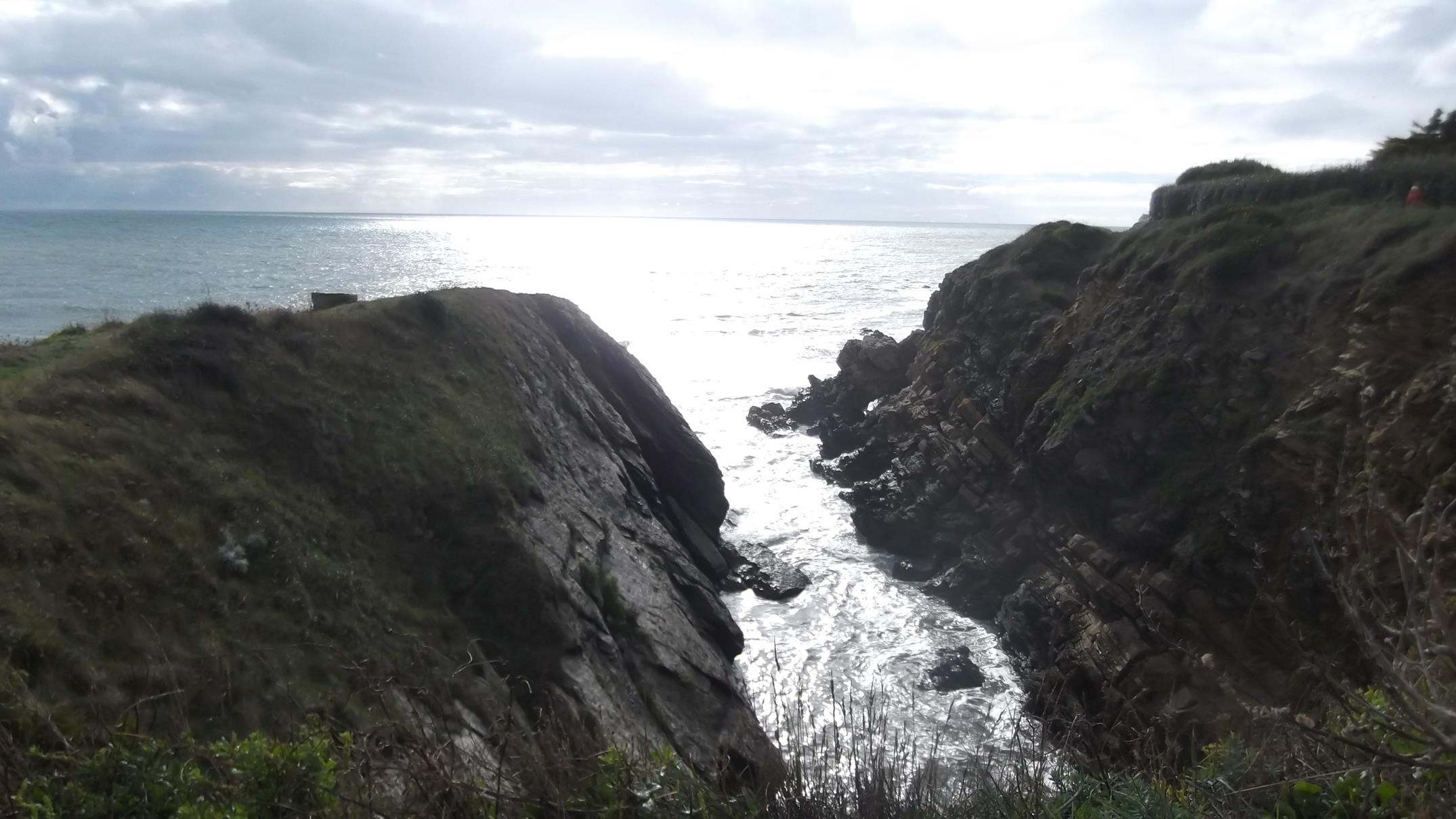News blog - artistravel international
All Eyes On Janis Fry - Colors, Culture and Sacred Yew Trees
This week we talked to Janis Fry, an artist and one of our tutors, who loves to capture the magic of moments in painting and writing. Janis was born in London and left to go to university in North Wales when she was 18. She never went back, married and moved south. Impressed by the stunning Welsh landscape with its terrific diversity she is now based near Carmarthen in a tiny village called 'Llandybie'. For her, it feels as if fate has put her there. Wales has the largest collection of ancient yew trees on earth and the yews are her main subject matter, although colour is extremely important to her and she actually paints all sorts of things that fascinate her visually.
1. Which trip / tour had the biggest impact on you and your life as an artist and why?
Apart from finding Le Pouldu by accident, my trip to Morocco and also one to India, had the biggest impact on me and my artistic life, teaching me the same lesson. Artists have always gone south to understand colour and I am no exception. In these 2 countries I found the colours that intrigued and informed me were not so much in the landscape as in the man made things – the clothes, fabrics and buildings. What I learnt was that while the colours of these countries coincided with my own understanding of pure colour, they taught me something I had overlooked, which is that the earth colours, the neutrals, the browns and greys are of ultimate importance in supporting and enriching a colour scheme, refining and maturing it. As in the base notes of music, these colours underpin and stabilise the composition, the same as in perfume and food. Without them the work is shallow and without substance.
2. Why is travelling important for you as an artist?
It is important for me to see new things, both in the natural and cultural worlds. I also love to travel by train to see the changing landscape. The things I see may not be used in my painting directly but they inform it and show me a different slant on things. These things creep into my work, giving it originality. I also look for ancient spiritual symbols and artefacts in the museums of other countries.
3. What’s your favourite destination to paint/take photos and why?
I can’t live without Le Pouldu! It’s my favourite place in the whole world. All the time, it is there in the back of my mind, the beauty and wildness of the place out of season. For 2 months in the summer, hundreds of people descend and a couple of shops open and then at the end of August everyone disappears without a trace! That’s when I like to be there:- before and after the holiday hordes. This was Gauguin’s secret place where he was able to develop his style. He found it by accident too! It is benign and artistically nourishing. I love the whole slow journey I take there by car and by ferry. Happiness builds the closer we get and everyday concerns are left behind. Somehow a door opens within myself.
4. Is there a destination you haven’t been to yet that you would love to visit?
Not really. I love Brittany and France. These places are enough for me nowadays, although I also love Italy and the Greek islands. I am very happy revisiting these places, deepening my relationship with them.
5. What motivated you to start your teaching career?
I feel very inspired by the things I see, by light and the juxtaposition of colours, the way ordinary things can become extraordinary when looked at in certain lights. The mystery of existence fascinates me, the complexity of nature and of life and I love to share these things with other people and also to share my technical knowledge of drawing, the use of materials, and my knowledge of Art history. I like to show these things to other people for the joy of it and sometimes people I teach can’t make sense visually by themselves or can’t find their artistic voice and need help to do so. I love to help make this happen.
6. What were those formative days of teaching like?
My parents were both teachers and so I was brought up to be one. We had a need to share and offer others a way of living and being in this world through our vision and the things that fascinate and have meaning for us. After I trained I didn’t teach for 10 years but went straight into life as an artist, running an international company producing painted silk dresses. After I started teaching I always carried on learning and students found my enthusiasm infectious! I don’t stand still for long but am always finding new things in art and wanting to play with them. They say a teacher teaches best what they most need to learn.
7. What do you like most about the combination of teaching and travelling?
The excitement of it all and the visual impact of new places. I have taught all over Europe, in Venice, Paris, Amsterdam, Tuscany, the Pyrenees but for now I have settled on this one place which offers so much, and where I have taught for about 7 years, Le Pouldu in Southern Brittany. However the journey never ends and we never know what lies ahead! I would like to investigate Cave Art in central France and perhaps eventually take students with me. Whatever I find out about that excites me, I want to pass on.
8. What was the funniest experience throughout your teaching career?
Taking a party of students to Cornwall! They all got on the right train. I and one of the older students, got on the wrong one! The trains kept catching up with each other and running parallel and we kept waving frantically to each other through the windows. Luckily by the time we got to Cardiff, where the tracks would diverge, the railway staff knew what was going on and held the trains long enough to enable us to change to the right one, amidst much cheering from the other passengers!
9. What inspires you and which motifs do you like best, and why?
Portals and the Tree of Life, colour and light, life, death and eternity. The Tree of Life, my main motif and theme, is a portal itself but more obviously tree tunnels, paths that disappear into the distance, doors slightly open, windows, gates, bridges, boats, things that appear and disappear, like boundaries and blurred edges between things, effervescent light and transcendent atmospheres. These are all things that lead you somewhere, and they can all be seen as portals, entrances, ways through, that can take you from one state of consciousness to another, one state of being to another, one place to another. Often these portals and their guardians, are magical things that only appear when we are ready.
10. What artists influence your work most?
Underlying my work in a non obvious way, are the ancient nameless artists who produced Cave art, Megalithic art and symbols and Tribal art. In more modern times the artists I learnt most from and are still influenced by, are Gauguin, Gaudi, Cezanne, Pissaro, Picasso, Bonnard, Graham Sutherland, William Blake, Samuel Palmer, David Tress and my Art College teacher, the Welsh artist, Glenys Cour.
11. If you hadn’t become an artist, what would you be doing right now?
I’d probably have become a Herbalist but Art and Botany clashed at school and I was forced to choose my future path at that stage.
12. You are hoping to spend time painting and teaching at ‘Le Pouldu’ in France this September and October – everybody who likes to attend a painting class is invited to join. What is so special about this place?
It’s hard to know where to begin to answer this! Everything about this place is special! For me, as it was for Gauguin, Le Pouldu is central to my work as an artist. Gauguin actually described Le Pouldu as Nirvana and when he died in Tahiti, he had before him on his easel, a painting of Brittany as if he had thought the grass was greener elsewhere but ultimately realised he had left Paradise. There is a mystical quality to Le Pouldu, a special blue light and atmosphere caused by the vast expanse of that colour at the meeting of the river, the sea and the sky. Here, Gauguin spent his 2 most formative years as a painter and others like Paul Serusier, followed. Part of him is still there and I go to find the same things that inspired this great artist and to experience the peace that is there, in which things are quietly revealed and meditation and reflection is possible. Here the natural world is so alive and vibrant. The land, the sea, the golden sands, the river, the forests and creeks, the cornfields, the ancient standing stones, seem to vibrate with energy. Throughout the summer, the Hollyhocks and Hydrangeas sing with colour and the beautiful river, La Laita, edged by unbelievably coloured rocks, takes you up to the monastery of St Maurice a place of pilgrimage with its blue gates, it’s yew trees and holy well.
13. Apart from this, do you have any upcoming shows, collaborations, book releases you would like us to know about?
I am not only a painter but also a writer on ancient yew trees. I have written books and booklets, most notably a classic called ‘The God Tree’, published by Capall Bann in 2012 and also articles on The Golden Bough for British, German and Swedish magazines. My 3rd book, ‘The Cult of the Yew’, is being prepared and will hopefully emerge at the end of next year. My paintings can be found at local galleries, open studio and online at my website – www.janisfryart.co.uk and on my blog https://ancientyewsandart.wordpress.com/
Discover the Magic of 'Le Pouldu' in one of our painting courses with Janis Fry: https://www.artistravel.eu/en/tutors/janis-fry
Posted in Artists, Painting on Aug 15, 2018

